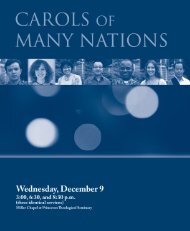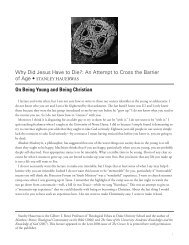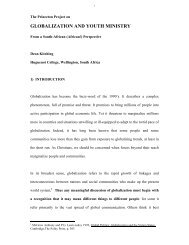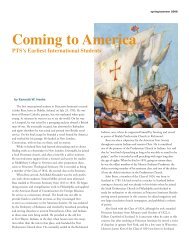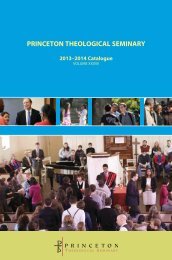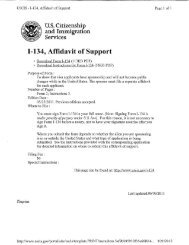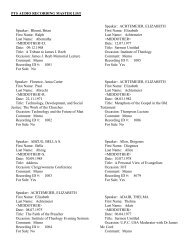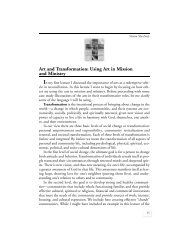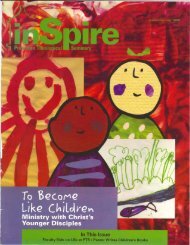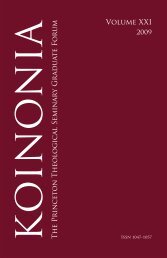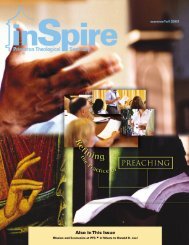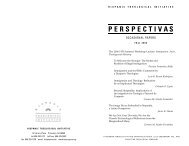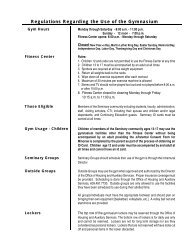Faculty - Princeton Theological Seminary
Faculty - Princeton Theological Seminary
Faculty - Princeton Theological Seminary
Create successful ePaper yourself
Turn your PDF publications into a flip-book with our unique Google optimized e-Paper software.
NT3420 Women and the Letters of Paul<br />
Women in Paul’s letters, in the churches of Paul’s ministry, and as readers of Paul’s<br />
letters. Prerequisite: NT101. 3 credits.<br />
Fall Long Term, 2009–2010; Ms. Gaventa<br />
NT3426 Greek Exegesis of Philippians and Philemon<br />
Close reading of the Greek text of Philippians and Philemon with particular attention<br />
to questions of Christology, ecclesiology, and the moral formation of the Christian<br />
community for mission. This course fulfills the “close reading of the text” requirement.<br />
Prerequisites: NT101 or NT2101 and NT152, NT4S or NT1152. 3 credits.<br />
Spring Short Term, 2008–2009; Mr. Wagner<br />
NT3436 Greek Exegesis of Ephesians<br />
An exegetical and theological study of the Greek text of the epistle to the<br />
Ephesians, with an emphasis on its place in the Pauline tradition, its relationship<br />
to ancient Jewish and Christian apocalyptic traditions, the Trinitarian dimensions<br />
of its theology, and the challenges posed by the interpretation of its so-called<br />
“household code.” Students will be evaluated on the basis of weekly exegetical<br />
worksheets, occasional minor writing assignments, and a final project chosen from<br />
three options. 3 credits.<br />
Fall Long Term, 2009–2010; Mr. Berg<br />
NT3437 Greek Exegesis of James<br />
The Epistle of James has been called the most socially conscious writing in the New<br />
Testament. We will emphasize both the powerful exhortation for which James is<br />
well known, as well as the particular theological vision that underlies this exhortation.<br />
To accomplish this, we will trace how the various ingredients of the letter<br />
(sayings of Jesus, wisdom traditions, the Old Testament, motifs from Greco-Roman<br />
moral philosophy, etc.) are blended into a rhetorically powerful and coherent<br />
argument. Finally, by reading the document in Greek, we will attend to the often<br />
unique vocabulary of James, as well as the letter’s at times very elegant style. This<br />
course fulfills the “close reading of the text” requirement. Prerequisite: NT1152,<br />
NT152, or NT4S and NT2101 or NT101. 3 credits.<br />
Spring Long Term, 2008–2009; Mr. Parsenios<br />
NT3450 The Historical Jesus<br />
A struggle with the question of what can be known reliably about Jesus’ life and<br />
essential message. Through references to the Jewish literature contemporaneous<br />
with Jesus, with insights obtained from archaeological research, and by an<br />
in-depth exploration of selected New Testament texts especially, the course will<br />
search for the history behind and within the kerygmatic faith. The dimension of<br />
history and faith in all credal formulae. Prerequisites: courses NT2101 and NT1152.<br />
3 credits.<br />
Spring Long Term, 2009–2010; Mr. Charlesworth<br />
e 95 f<br />
cat0809



